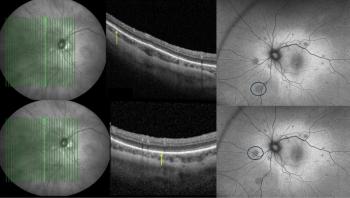
CCT measurements a must for all glaucoma patients
Central corneal thickness (CCT) measurements should be carries out on all glaucoma patients in order to help set an accurate target intraocular pressure (IOP) range.
Central corneal thickness (CCT) measurements should be carries out on all glaucoma patients in order to help set an accurate target intraocular pressure (IOP) range, according to Madhu Nagar and colleagues from the Clayton Hospital, West Yorkshire, UK.
A team of researchers carried out a retrospective analysis of existing glaucoma patients at the Clayton and Dewsbury Hospitals, UK between April 2002 and September 2006. IOP was measured using Goldman Tonometry and CCT measured with a hand-held ultrasound pachymeter.
A total of 168 patients were identified for the study. The average CCT was 538.6 µm and corneas were thicker in ocular hypertension patients than in those with normal tension glaucoma. IOP measurements were also found to be higher in patients with thicker corneas. Forty-nine eyes of 35 patients had two CCT readings taken over a period of time but no clinically significant differences were found between the two measurements.
The team suggest that CCT measurements be carried out on all glaucoma patients since the results can help set accurate target IOP ranges, which can in turn help prevent over-treatment.
Newsletter
Get the essential updates shaping the future of pharma manufacturing and compliance—subscribe today to Pharmaceutical Technology and never miss a breakthrough.













































